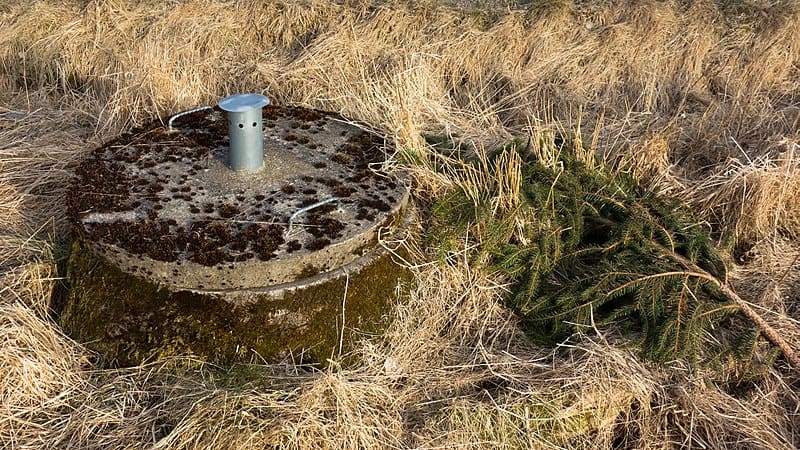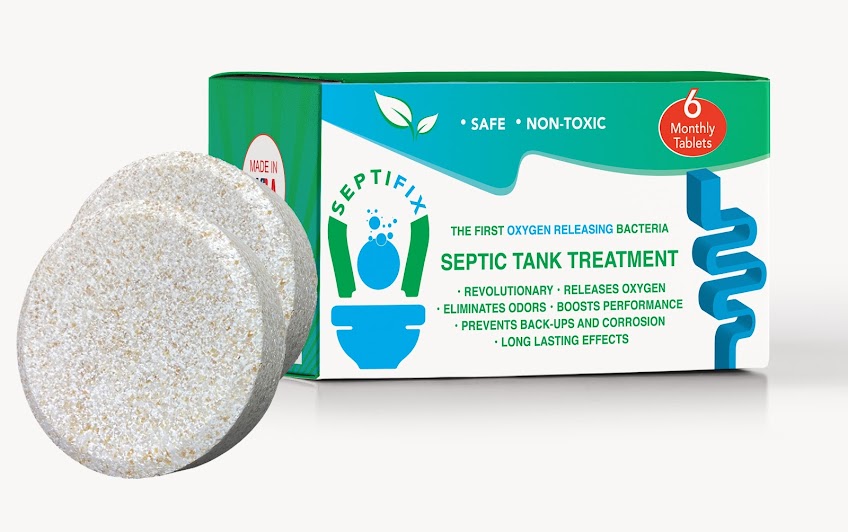Best Septic Tank Effluent Filters
If your property relies on an on-site septic system, chances are your septic tank is fitted with a filter. This filter is what’s referred to as the effluent filter (outlet filter, to some).
It is a slotted cylindrical piece that fits into a vertical pipe attached to the septic tank’s outlet. An effluent filter is designed specifically to prevent solid wastes in your septic tank from making their way onto the drainfield.
If, however, your current system does not have a septic tank filter installed, please know that your entire system will benefit from the addition of an effluent filter. Septic tank effluent filters are an affordable and cost-effective way to improve the efficiency of your septic tank system, while also protecting and extending the lifespan of your drainfield.
How important are septic tank effluent filters? As a septic tanks fills up, the liquid waste layer will reach a point where it will exit the septic tank through a pipe running through the outlet hole. While it’s true that it is mainly liquid waste (or effluent) that exits the tank, there will likely be solid waste matter floating in the effluent that can flow through the outlet pipe and travel to the drainfield. An effluent filter is an inexpensive fixture that will prevent excessive amounts of solid waste from exiting the septic tank and making its way to the drainfield. Because if too much solid matter leaves through the outlet of the septic tank and end up on the drainfield, you are risking your drainfield becoming clogged, which, eventually, causes the failure of the entire septic system.
On average, a failed septic system can cost you upwards of $25,000.00. Aside from the exorbitant unplanned costs, a failed drainfield poses such serious health concerns. Not only are disease-causing pathogens released into the ground, but groundwater may be contaminated as well, risking the flora and fauna within the vicinity. All living organisms in the contaminated region can contract serious infections or diseases from the pathogens released by a failed septic drainfield. The effects of a failed drainfield are far-reaching and have a catastrophic impact on health and the environment.
If your septic tank does not already have an effluent filter installed, you can have this added easily. Besides that effluent filters require very little maintenance, its benefits outweigh its cost to install. The best septic tank effluent filters are solidly effective in preventing solid waste matter from clogging up the drainfield, especially the non-biodegradable objects, and would require minimal maintenance. Effluent filters help greatly in containing solid waste inside the septic tank until the next routine pumping. Truly, an effluent filter can be your most inexpensive and cost-effective protection from septic system failure. We’ve listed down six of the most consumer-popular septic tank effluent filters that work best with septic systems.
#1 Polylok PL-68 Effluent Filter & Housing (Baffle/Tee)

The Polylok PL-68 Effluent Filter and Housing offers 68 linear feet of 1/16” filter slots, a design which significantly extends time in between cleaning. It locks in any 360° position when used with a PL-68 tee. It is compatible with 3/4” PVC handles. The PL-68 is much more than just an effluent filter. The housing that comes with can also be used as an inlet baffle (tee) or with any 4” outlet septic tank filter. The Polylok PK-68 housing is designed to accept Polylok’s snap-in gas deflector to deflect gas bubbles away from the tee and to keep the solid waste particles contained in the septic tank. The PL-68 is ideal for residential waste flows of up to 800 gallons per day (GPD).
PRO: The Polylok PL-68 does fit as direct replacement for the typical long nylon mesh filters. It is easy to install and it can go for up to 3 months without cleaning.
CON: It does not come with an Extend & Lok. This needs to be purchased separately.
#2 Tuf-Tite Effluent Filter EF-4 Combo

Tuf-Tite offers the most advanced, easy-to-install effluent filters in the septic system market. Tuf-Tite has a presence with its two series (Residential and Commercial), with designs that will fit most (if not all) septic systems. The EF-4 Combo from Tuf-Tite works with both 4″ SCH40 and 4″ SDR35 pipe. This kit come with an adapter ring for the latter.
PRO: Tuf-Tite EF-4 combo will fit perfectly over 4″ schedule 40 PVC and with the attachment, it fits great on thin-walled systems, as well.
CON: You just need to make sure that the arrow on the top of the yellow filter body (just under the handle) is pointed toward the discharge pipe from your EF-4, otherwise your filter will clog plug up sooner than the optimal time frame.
#3 Polylok PL-122 Effluent Filter & Housing

The Polylok PL-122 Effluent Filter and Housing installs easily in new tanks, or retro-fits in existing septic systems. Polylok’s was the first filter in the market equipped with a flow control ball that shuts off effluent flow when the filter is removed for routine cleaning. It comes complete with its own housing. No gluing of tees or pipe necessary and no additional parts to buy. The PL-122 from Polylok is ideal for residential waste flows of up to 3,000 GPD. The PL-122 from Polylok has a modular design, allowing for better filtration.
PRO: With the Polylok PL-122, you have the option for an alarm switch.
CON: Its outer ring is sized 4” with an inner ring of 3”. Product does not come with an adapter for smaller outlets.
#4 EF-6 Commercial Effluent Filter by Tuf-Tite

The EF-6 series filters solid wastes down to 1/16″ in size, significantly extending the life of any septic system. This EF-6 Combo includes the standard length (14″ rise) Sanitary T-Baffle, an EF-6 Filter, and the B4035 bushing for smaller outlet pipes. It has a Solids Deflector that’s molded in. The Sanitary T-Baffle included may also be used as an Inlet and Outlet Tee. EF-6 filters cleans easily and replacement filters are readily available for purchase.
PRO: The Tuf-Tite EF-6 Commercial Effluent Filter is easy to install. It can be glued to SCH40 Pipe or Lightweight 40 (4″) pipe with the included adapter ring. To ensure a good fit, you need to use standard SCH40 pipe glue and primer.
CON: It has no flow-control mechanism that shuts down effluent flow during routine maintenance.
#5 SimTech 4″ Septic Tank Bristle Filter – STF-110 (Filter Only)

SimTech bristle filters offer superior filtration for tissue, hair, lint, and most common solid waste particles found in typical wastewater. The SimTech STF-110 filter is designed with non-directional bristles for unrestricted flow. The STF-110 bristle filter from SimTech easily installs in any existing 4” pipe or baffle and its flexible design will allow for easy maintenance. Its self-locking bristles hold the filter firmly in place, eliminating “filter float up”. Rated to filter up to 1200 GPD.
PRO: The SimTech 4” STF-110 filter is simple to install and easy to clean. The filter can simply be washed out and reused or you can choose to simply pull out and replace the filter with a brand new unit. Plastic bags are supplied with the filter for convenient disposal.
CON: A couple of users have observed that the volume of bristles on this replacement filter may hamper liquid waste flow to some degree.
#6 Zoeller 170-0078 Septic Tank Effluent Filter

The Zoeller 170-0078 Septic Tank Effluent Filter Cartridges have a height of 15”. This filter fits into 4” pipes. Zoeller’s two-piece design allows you to pull the filter out without unfiltered effluent escaping to the drain field. Ideal for use in single family residential units.
PRO: Easy to install and maintain. The filter cartridge is easily removed for easy cleaning.
CON: Some users are of the opinion that the plastic molding of the Zoeller is not exactly top quality. The filter mechanism may work very well, but users fear that the thin plastic may make it susceptible to breakage.
How to Clean Your Septic Tank Effluent Filter
As discussed, your septic tank effluent filter is a plastic device installed inside the outlet baffle of your septic tank to prevent solid waste matter (especially the small particles) from draining out onto your drainfield. Solid waste matter, if left to accumulate in your drainfield, will prematurely plug it up and shorten the lifespan of the leach lines and the rest of your septic system. Septic tank effluent filters requires regular cleaning, otherwise you may notice that your plumbing will begin to drain slowly.
To clean your septic tank effluent filter, follow the simple steps listed below:
- Unscrew the septic tank outlet riser and remove the lid. Process may differ slightly, depending if you have a concrete lid instead of a plastic lid to your septic tank.
- The septic tank effluent filter is installed inside the outlet baffle (also referred to as “tee”). There may or may not be a handle on your effluent filter.
- Carefully remove the filter from the baffle. You may pull it out by hand or you may use a small hoe or rake to do so. Definitely wear disposable gloves for protection.
- Once the filter is out, clean this with water using a hose and spray nozzle. You can wash off the accumulated solid waste particles back into the septic tank.
- Do inspect the effluent filter for damage or plugged slots before replacing it back into the baffle (or “tee”).
- Re-install the filter back into the baffle securely. Take note as there may be an arrow on the filter indicating proper installation or placement.
- Place the riser lid back on the septic tank and screw on the lid tightly and securely.
Septic experts recommended that septic tank effluent filters be cleaned everytime you have your septic tank pumped out, at the very least. However, more frequent cleanings may be necessary, depending on usage. Remember that each septic system is unique, and each will require maintenance specific to that system’s specifications.
How Often Do You Need to Clean Your Septic Tank Outlet Filter?
A properly-functioning septic tank outlet filter will naturally become clogged as effluent is filtered upon its exit from the septic tank. As the solid waste matter accumulate over time, your effluent filter progressively becomes plugged up, requiring maintenance. As with all the other components of your septic system, septic tank outlet filters need maintenance, as well. The basic recommendation is to have your effluent filter cleaned whenever you get your septic tank pumped out.
Septic tanks must be pumped out periodically to remove sludge and scum which do not break down rapidly enough with the normal digestive processes occurring inside a septic tank. Under normal conditions, a well-maintained effluent filter will function for several years before cleaning is necessary. To be safe, your septic tank effluent filter should be cleaned whenever the tank is pumped, which is at least every 3 to 5 years.
Without this regular maintenance of the outlet filter, it can become severely plugged up with solid waste and sewage could eventually back up into your home or building. If you notice slow drains and/or gurgling noises coming from your plumbing system, these are indicators that your septic tank is in need of a thorough cleaning and is due for routine maintenance. If you are planning to install a new effluent filter, it is best to contract a trained professional to do the installation or to clean or replace an existing one.
A clogged effluent filter is actually a good thing. This just means it is doing its job protecting the most expensive element of your on-site sewage system. A leading cause of drainfield failure is the neglected accumulation of solid waste matter that clogs up the pores of the soil, preventing treated effluent from percolating efficiently.
Signs of a Failing Effluent Filter
Your septic system is made of several vital components, ideally including the septic tank effluent filter (you see, not all systems may have this part). Unseen and often forgotten, the effluent filter (or outlet filter) is an integral part in maintaining the health and improving the longevity of your whole septic system. Much like submitting the rest of your septic system to periodic, routine maintenance, maintaining your septic tank effluent filter keeps the rest of your system healthy and functional.
To review, greywater and blackwater from your home or building are collected in your septic tank. There, solid and liquid waste are broken down. Heavy solid waste matter settle down to the base of the tank, forming the sludge layer, while lighter waste float to the top layer and form the scum layer. The mostly liquid layer in between the scum and sludge layers is called the effluent that’s ready to leave the septic tank and go to the drainfield. Septic tank effluent filters are implements installed by the tank’s outlet pipe that filter the effluent as it leaves the septic tank. Effluent filters trap solid waste matter that may be floating around the effluent layer, preventing them from making its way to your drainfield. Installed in front of the septic tank’s outlet, the slots in the effluent filter allow water to pass through while successfully catching solid particles.
Over time, the filtered solid waste can accumulate on the effluent filter, diminishing its efficiency. Neglecting a severely clogged up effluent filter could lead to massive (and expensive) septic issues, possibly even system failure.
How do you know that it’s time to clean, or maybe even replace, your septic tank effluent filter? You know it’s time if you observe the following signs of a clogged septic effluent filter:
Excessive solid waste inside the septic tank. Solid waste will build up inside a septic tank when an effluent filter has been left clogged for too long. The effluent will be left without an outlet to the drainfield. A large amount of waste in your septic tank could be causing sewage to back up into your home and this means it’s time to schedule an inspection and, very likely, a pump-out. Neglecting to do so could potentially lead you to the next warning indication.
Wastewater is backing up into your house. A properly-functioning septic system would never cause a back-wash of sewage into your home or facility. A compromised septic tank effluent filter means that wastewater is not able to exit the septic tank and flow into the drainfield. This wastewater, then, has nowhere to drain except back into your building. Catastrophe. Gurgling noises emanating from your drains, slow flushing and draining, and standing water in your bathtubs or sinks are all sure-fire signs that it’s time to bring in a septic professional.
Your drainfield is showing signs of malfunction or failure. A drainfield allows for proper percolation, evaporation, and disposal of wastewater. If you start noticing saturated and smelly ground around the area where your septic tank is buried, this could be pointing to a septic system failure. However, a broken or clogged effluent filter could also be the cause this unwanted issue. Check on your effluent filter fast, before things take a turn for the worse. Restoring a drainfield is certainly not cheap as replacing your malfunctioning septic tank effluent filter. Such a huge headache is easily avoided with regular inspection and maintenance of your effluent filter, your septic tank, and the rest of your system.
Your septic tank monitor or alarm has set off. Some septic tank effluent filters come fitted with an alarm system that will alert you when it’s in need of a cleaning. Newer systems would typically have this alarm above-ground. Older systems, on the other hand, may sound off alerts from inside the tank. Never ignore this.
It’s been proven how septic tank effluent filters significantly help extend the life of your septic tank, as well as the entire system. It is the most affordable investment towards peace of mind that your septic tank is functional and efficient. Taking care of your effluent filter IS taking care of your septic tank and drainfield, to put it simply. If your existing septic tank has no effluent filter installed, you may want to re-think this. And if you are retro-fitting an existing tank with one, it is ideal that you consult with your trusted septic professional for the best option most suitable for your kind of system. Also – and we can never emphasize on this enough – regular maintenance of the entire septic system is perhaps one of the most sound investments a property owner can make for the sake of everyone’s well-being and safety. Periodic and routine maintenance will certainly save you from the inconvenience and worry of expensive septic emergency repairs.
Sources
https://tgwastewater.com/products-page/effluent-filters
https://www.septicsolutions.com/septic-parts/septic-tank-filters/gravity-effluent-filters
https://www.septicsolutions.net/store/effluentfilter.htm
https://www.pumper.com/blog/2014/10/your_go_to_guide_for_effluent_filters_sc_002j7
https://www.gcph.info/files/resources/How_To_Clean_your_Septic_Tank_Filter.pdf











